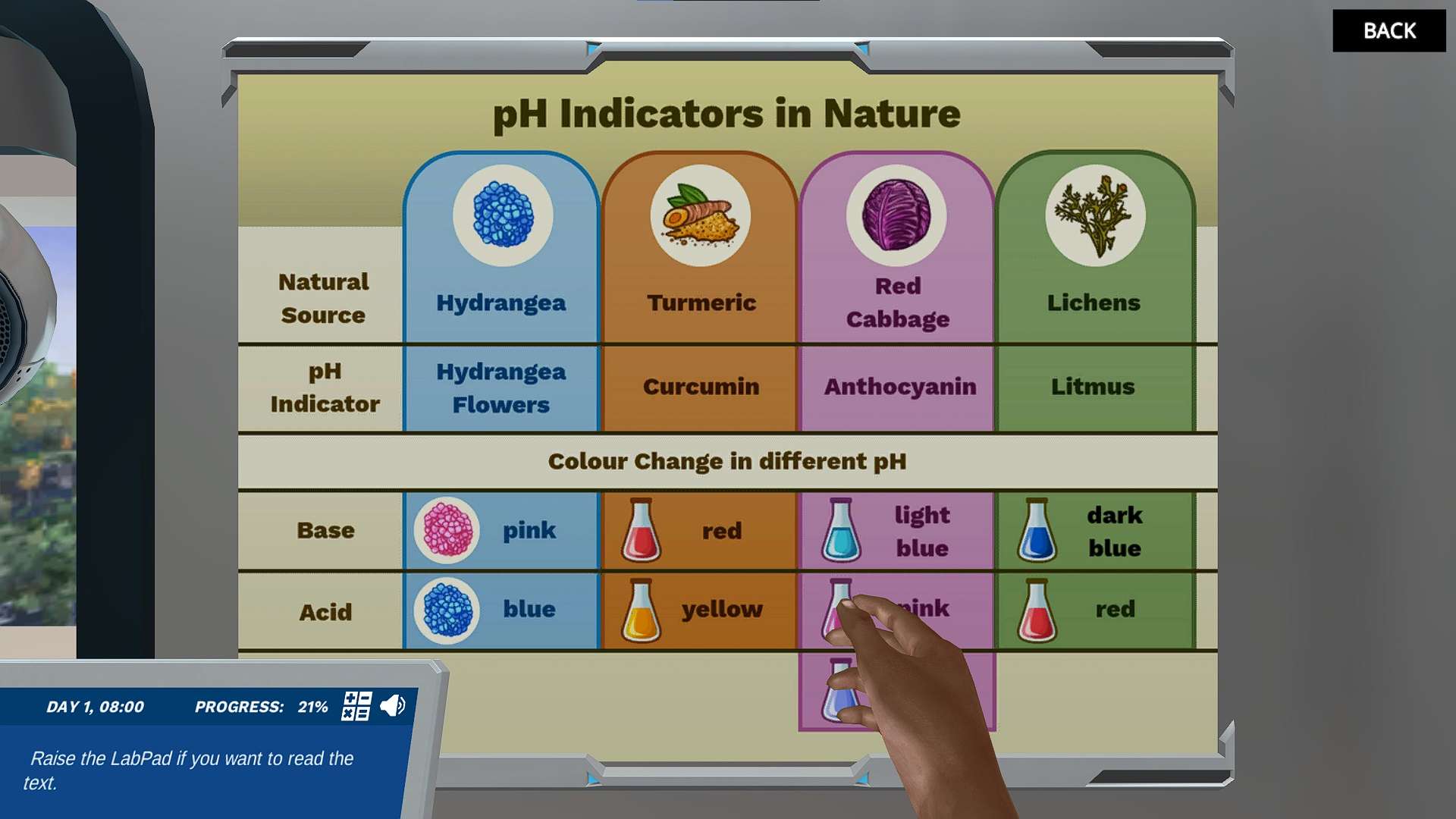Heading 1
Heading 2
Heading 3
Heading 4
Heading 5
Heading 6
Lorem ipsum dolor sit amet, consectetur adipiscing elit, sed do eiusmod tempor incididunt ut labore et dolore magna aliqua. Ut enim ad minim veniam, quis nostrud exercitation ullamco laboris nisi ut aliquip ex ea commodo consequat. Duis aute irure dolor in reprehenderit in voluptate velit esse cillum dolore eu fugiat nulla pariatur.
Block quote
Ordered list
- Item 1
- Item 2
- Item 3
Unordered list
- Item A
- Item B
- Item C
Bold text
Emphasis
Superscript
Subscript
About This Simulation
Perform the litmus test on six organic compounds found in nature. Interpret the results to identify which organic compounds are carboxylic acids.
Learning Objectives
- Identify the chemical reagents and equipment used in the litmus test
- Recall the steps of the litmus test
- Interpret the results of the litmus test to identify the carboxylic acids.
About This Simulation
Lab Techniques
- Litmus test
Related Standards
- HS-PS2-6
Learn More About This Simulation
Did you know that carboxylic acids are found commonly in nature? In this simulation, you will learn how to perform the litmus test and how to interpret the test's results. To do this, you will test six organic compounds that are from natural sources, and determine which of the natural sources contain carboxylic acids.
Discover pH indicators
To determine which organic compounds are carboxylic acids, you will test each compound's acidity using colourful pH indicators. With the help of a lab poster, you will discover the variety of naturally occurring pH indicators, such as Litmus, and find out how they work. Apply what you discovered, to learn what the results of the litmus test look like when dipping litmus paper in acidic, basic, and neutral solutions.
Perform the litmus test
Now you are ready to perform the litmus test on the organic compounds. Begin by deducing which coloured litmus paper you should use to test for acids: red or blue? Then, learn the steps of the litmus test with helpful guidance from Dr. One. Once you are familiar with the steps, repeat the test for the remaining organic compounds. Do not worry if you make a mistake, as you can always restart the experiment by pressing the reset button.
Identify the carboxylic acids
After testing the compounds, there is one step remaining, and that is to interpret the results! Look at the results in front of you to determine which of the natural sources contains a carboxylic acid. Does spinach really contain carboxylic acids?
For Science Programs Providing a Learning Advantage
Boost STEM Pass Rates
Boost Learning with Fun
75% of students show high engagement and improved grades with Labster
Discover Simulations That Match Your Syllabus
Easily bolster your learning objectives with relevant, interactive content
Place Students in the Shoes of Real Scientists
Practice a lab procedure or visualize theory through narrative-driven scenarios


FAQs
Find answers to frequently asked questions.
Heading 1
Heading 2
Heading 3
Heading 4
Heading 5
Heading 6
Lorem ipsum dolor sit amet, consectetur adipiscing elit, sed do eiusmod tempor incididunt ut labore et dolore magna aliqua. Ut enim ad minim veniam, quis nostrud exercitation ullamco laboris nisi ut aliquip ex ea commodo consequat. Duis aute irure dolor in reprehenderit in voluptate velit esse cillum dolore eu fugiat nulla pariatur.
Block quote
Ordered list
- Item 1
- Item 2
- Item 3
Unordered list
- Item A
- Item B
- Item C
Bold text
Emphasis
Superscript
Subscript
A Labster virtual lab is an interactive, multimedia assignment that students access right from their computers. Many Labster virtual labs prepare students for success in college by introducing foundational knowledge using multimedia visualizations that make it easier to understand complex concepts. Other Labster virtual labs prepare learners for careers in STEM labs by giving them realistic practice on lab techniques and procedures.
Labster’s virtual lab simulations are created by scientists and designed to maximize engagement and interactivity. Unlike watching a video or reading a textbook, Labster virtual labs are interactive. To make progress, students must think critically and solve a real-world problem. We believe that learning by doing makes STEM stick.
Yes, Labster is compatible with all major LMS (Learning Management Systems) including Blackboard, Canvas, D2L, Moodle, and many others. Students can access Labster like any other assignment. If your institution does not choose an LMS integration, students will log into Labster’s Course Manager once they have an account created. Your institution will decide which is the best access method.
Labster is available for purchase by instructors, faculty, and administrators at education institutions. Purchasing our starter package, Labster Explorer, can be done using a credit card if you are located in the USA, Canada, or Mexico. If you are outside of North America or are choosing a higher plan, please speak with a Labster sales representative. Compare plans.
Labster supports a wide range of STEM courses at the high school, college, and university level across fields in biology, chemistry, physics, and health sciences. You can identify topics for your courses by searching our Content Catalog.















